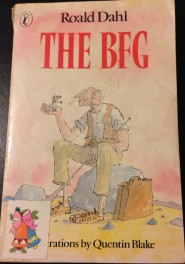I have just listened to When Nietzsche Wept by Irvin D. Yalom and was intrigued by the thought that fiction, perhaps more so historical fiction about real characters, tells a story that might have been, of situations that are equally as plausible as the real events. The only difference is, they didn’t happen. The author explains how the events he wrote about, a fictional meeting between the doctor Josef Breuer and the philosopher Friedrich Nietzsche, could almost have happened, were but a hair’s breadth away from happening.
(Note: The book was a recommendation by author Anne Goodwin. Read her review here.)
I often wonder about coincidences, those chance events and meetings that influence our futures, those things that may not have occurred had we been even one second earlier or one second later. It can be fun to contemplate the possibilities of our current situation had an alternate major decision been made. But what of the little events that slip by us every moment. How could a difference in any one fraction of time change our lives?
Memoirist Irene Waters asked a related question in her article Life is a Memoir: What is Fiction? shared at the Carrot Ranch a few weeks ago. Irene begins by saying that “Truth is considered fundamental in writing memoir” but then tells us that memory is not exact, and that it is “a construct and will vary at different times and places”. She asks, “As our remembering creates our identity, then, is our self a fiction?”
Knowing that each witness or participant may tell a different version of an event adds layers to that question. Which versions are fact and which are fiction? Are all enhanced with the fiction of our own perspectives?
Any teacher of young children, or perhaps anyone involved in jury duty, or any viewer of news stories knows, there can be many alternate histories of an event. Deciding where most truth lies can be the difficult part.
“He did it.”
“She started it.”
“It’s mine.”
“He punched me first.”

When Charli Mills of the Carrot Ranch challenged writers to In 99 words (no more, no less) write a story about Fannie Hooe. Although she is a legend in the Kewenaw, feel free to go where the prompt leads, I wondered what I could possibly write. I know nothing of the Keweenaw or of Fannie Hooe.
However, in her post, Charli explains that much of what is known about Fannie Hooe is from snippets of things “They say”, alternate histories perhaps, with either some or little resemblance to the “truth”.
Charli wrote, “legend has it, Fannie was a little girl, perhaps the daughter of an officer, who went missing. As they circled the lake they called, “Fannie…! Fannie, hooe! They say, they never found her body.”
Further in her article, Charli goes on to say, “Two historians … knew a great deal about the real Fannie. She was from Virginia and came as a single woman to Fort Wilkins to help her pregnant sister. She was not a girl, but a young lady. They say she went missing, mauled by a bear or murdered by a spurned lover.
Truth is, she returned to Virginia, married and lived a long life.”
This disparity between truth and fiction reminded me of a television program from years ago. As I recall it: three contestants professed to be the person described by the host. Each presented information about “themselves” to panellists whose role it was to judge who was telling the truth. The real person had to be truthful but the imposters could lie. After votes had been cast the ‘real’ person was asked to stand up.
This is my response to Charli’s challenge. I hope you enjoy it.
Truth or Fiction: Will the Real Fannie Hooe Please Stand Up
Contestant 1: I am Fannie Hooe. My pregnant sister was an excuse to escape my abusive husband. After the baby’s birth, I ‘disappeared’, started a new life in Canada, and never remarried.
Contestant 2: I am Fannie Hooe. While visiting my sister, I was abducted by miners and forced to be their slave. When I escaped, I was so disfigured, I wanted no one to see.
Contestant 3: I am Fannie Hooe. I was pregnant, unmarried, and begged my sister to hide me. She refused and banished me. I started a new life in Virginia as a widowed mother.

Thank you for reading. I appreciate your feedback. Please share your thoughts.













